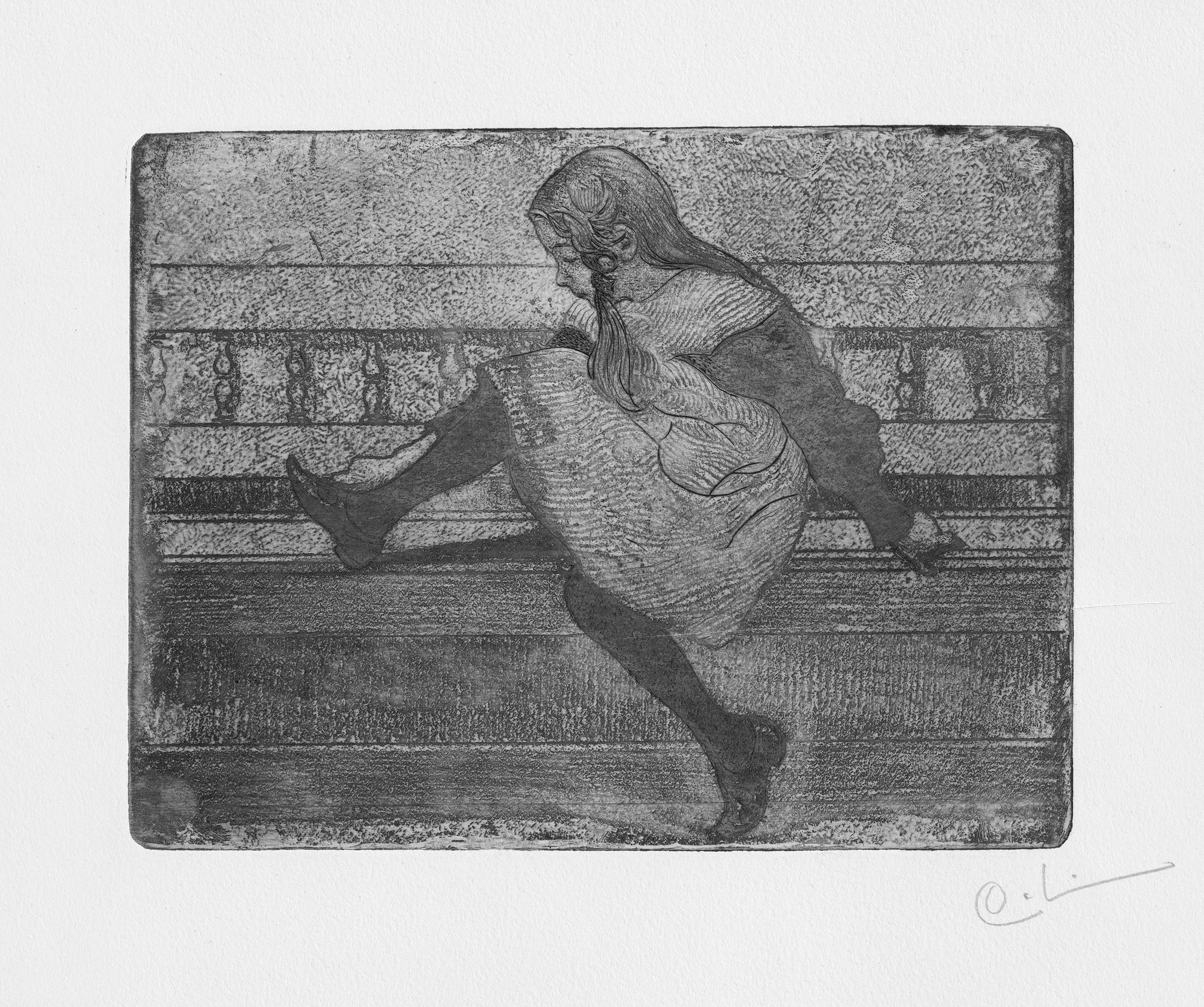Loading the page ...
Carl Larsson
(1853 Stockholm – 1919 Sundborn)
Kersti on the Bench. Vernis mou on yellowish wove paper. 15 x 19.5 cm. Monogram in pencil: “C. L.” 1904. Hjert & Hjert 51.
Like his friend and fellow artist, Anders Zorn, Carl Larsson was a versatile artist who distinguished himself as a painter, aquarellist, illustrator and printmaker. From 1875 he devoted himself – with interruptions – to printmaking. Before then there had been no opportunity to train as a printmaker in Sweden. It was only in 1875 that Leopold Loewenstam opened a school of etching in Stockholm, where Larsson attended courses. From 1886 he concentrated to a greater extent on etching. His first major prints arose in Paris in 1888/89 and he gradually came to develop a formal idiom of his own, for which he derived inspiration from a wide range of different sources. The influences exerted by Japanese woodcuts and contemporary artists such as Albert Besnard, Puvis de Chavannes and Mary Cassatt as well as by the Pont-Aven School merged to form a very distinct style indebted to Art Nouveau, the colourful, decorative surface effect and stylization of which give it great appeal and visual charm. From 1901 Larsson lived permanently with his wife, the painter Karin Bergöö, and their eight children in his country house in Sandborn near Falun which has been made famous by innumerable watercolours and colour illustrations. It was these delightful and succinctly observed depictions of a family idyll which founded Larsson’s international reputation.
The girl portrayed here is Larsson’s daughter Kersti, born in 1896, who often sat as a model for her father. The etching is remarkable for the subtle, psychologically sensitive characterisation of the eight-year-old. Larsson has captured in masterly fashion the childlike grace and innocence of his little daughter, who is sat on a bench lost in thought with her right hand touching her shoe. The formal simplification and the finely gradated tonal values give the image great visual succinctness. The delicate and varied surface patterns created by the vernis mou technique produce a highly decorative effect very much in keeping with the gentle lyricism of the scene. A very fine, harmonious impression with wide margins. In impeccable condition. Rare.
Contact us for further information